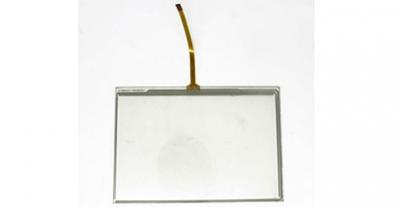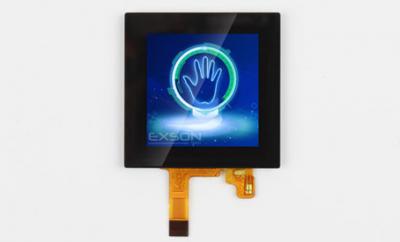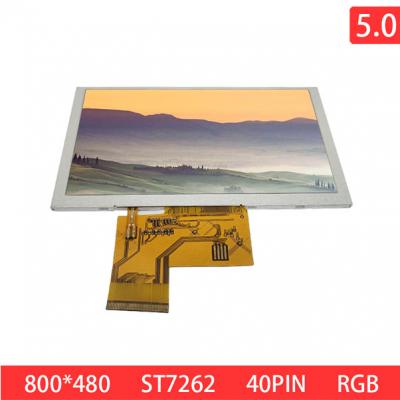The LCD liquid crystal display screen needs to undergo various types of tests before it leaves our factory, to ensure that our display screens are reliable, stable, and of good quality. As LCD liquid crystal displays are box-shaped structures made of glass and liquid crystal materials, they are limited by factors such as temperature and humidity, and typical liquid crystal displays have product defects in terms of operating temperature and storage temperature. Therefore, the reliability testing of LCD SPIs is particularly important.
The reliability testing of LCD SPIs refers to the conditions under which our SPI products are reliable and stable. Through reliability testing, customers recognize the durability and reliability of our display screen products. Before implementation, our components need to be exposed to adverse environments such as temperature and humidity. In order to make the product conform to the expected function, we need to make a series of improvements to the product. The results of the SPI reliability test (including numerical values) can be found in our product specifications with detailed information and data.
Next, we will introduce all types of LCD SPI reliability testing and the testing process.
The electrical performance of SPI products changes significantly with a large increase or decrease in temperature. These tests are conducted to assess the long-term exposure of the device to high and low temperatures when the SPI device is turned off.
Prior to testing, the test screen must be placed at the set temperature for a period of time. After the test is completed, the test screen is visually and electrically inspected within the specified time. The temperature in the laboratory starts at room temperature and increases and decreases with each test until damage to the test screen is observed.
Operating temperature testing for the LCD SPI
These tests differ from the previous scenario in that there is voltage present. In other words, the test screen is being tested during its operation. Typically, the temperature range that passes these tests is smaller than that of storage testing.
Temperature cycling testing for the LCD SPI
Defined as the device's tolerance to periodic temperature changes. During a relatively short period of time, the test screen is heated and cooled. This test tells you how well the display screen product can withstand temperature shocks. These tests are also conducted in special test rooms.
Vibration testing for the LCD SPI
In this test, the test screen is vibrated by a special vibrator. The shocks are performed at specific frequency ranges and deviate in three directions.
Moisture resistance testing for the LCD SPI
The test screen is placed in a high-temperature chamber, but this time the humidity is also kept at a high level. Test results include temperature, relative humidity, and length of the experiment. RH refers to relative humidity.
Packaging drop testing for the LCD SPI
The suspended rod fixes the packaged SPI product at a specific height and drops it at an appropriate angle to check the product and its packaging for qualification.
ESD (Electrostatic Discharge) Testing for the LCD SPI
ESD refers to the sudden current that appears between two objects with different electric potentials, usually generated by energization. This phenomenon can be observed in daily activities when a large amount of negative charge accumulates on the human body, such as friction on clothes/carpets.
We feel it as an "electric shock"-it can even be several kilovolts. Such discharges can permanently damage display screen devices, which is why ESD testing is necessary. The ESD generator is designed to simulate the human body, so its RC parameters (capacity and resistance) are similar to those of the human body. ESD testing is carried out in two situations, one is to contact the test object, and the other is to conduct air discharge at a specific distance. Find peace of mind with our superior TFT LCD modules for sale, backed by the expertise of our reliable custom LCD manufacturers. Our products undergo rigorous ESD testing to ensure optimal reliability and protection against sudden currents. Upgrade your electronic devices with our top-quality LCD screens, designed to withstand potential damages and deliver long-lasting performance.
 Resistive Touch Screen Working Principle and ApplicationsDecember 9, 2022A resistive touch screen is a sensor that converts the physical location of a touch point (X, Y) in a rectangular area into a voltage representing the X and Y coordinates. Many LCD modules use resisti...view
Resistive Touch Screen Working Principle and ApplicationsDecember 9, 2022A resistive touch screen is a sensor that converts the physical location of a touch point (X, Y) in a rectangular area into a voltage representing the X and Y coordinates. Many LCD modules use resisti...view The Importance of Clean Rooms in the Production Process of Industrial LCD ScreensAugust 4, 2023We will discuss the importance of clean rooms in the production process of industrial LCD screens. Let's start with the definition.A clean room is not simply defined as a clean space. In fact, it ...view
The Importance of Clean Rooms in the Production Process of Industrial LCD ScreensAugust 4, 2023We will discuss the importance of clean rooms in the production process of industrial LCD screens. Let's start with the definition.A clean room is not simply defined as a clean space. In fact, it ...view Exson Tech LCD 128x160: Compact and High-Definition, the New Trend in Future DisplaysJuly 1, 2024In the wave of the digital age, the display screen, as the core component of human-computer interaction, directly affects the user experience with its performance and quality. Among numerous display b...view
Exson Tech LCD 128x160: Compact and High-Definition, the New Trend in Future DisplaysJuly 1, 2024In the wave of the digital age, the display screen, as the core component of human-computer interaction, directly affects the user experience with its performance and quality. Among numerous display b...view What Are the Characteristics of LCD Display Panels?September 26, 2022Ⅰ. What are the characteristics of LCD display panels?1. The body is thin and space-saving: Compared with the bulky CRT display, the LCD display panel only needs one-third of the space of the former....view
What Are the Characteristics of LCD Display Panels?September 26, 2022Ⅰ. What are the characteristics of LCD display panels?1. The body is thin and space-saving: Compared with the bulky CRT display, the LCD display panel only needs one-third of the space of the former....view The Difference Between Resistive Touch Screen and Capacitive Touch ScreenFebruary 8, 2023There are many types of touch screens on the market, and the more common ones are resistive touch screen (RTP), capacitive touch screen (CTP), surface acoustic wave touch screen, and infrared touch sc...view
The Difference Between Resistive Touch Screen and Capacitive Touch ScreenFebruary 8, 2023There are many types of touch screens on the market, and the more common ones are resistive touch screen (RTP), capacitive touch screen (CTP), surface acoustic wave touch screen, and infrared touch sc...view Exploring the Technology Behind Medical LCD DisplaysJanuary 25, 2024The advancements in medical technology have significantly transformed healthcare systems, with medical LCD displays playing a crucial role in enhancing patient care. These display panels are specially...view
Exploring the Technology Behind Medical LCD DisplaysJanuary 25, 2024The advancements in medical technology have significantly transformed healthcare systems, with medical LCD displays playing a crucial role in enhancing patient care. These display panels are specially...view Call us on:
Call us on:  Email Us:
Email Us:  2F-M1 XiaWei Industrial Park, GuanLan, LongHua District, SZ, China
2F-M1 XiaWei Industrial Park, GuanLan, LongHua District, SZ, China